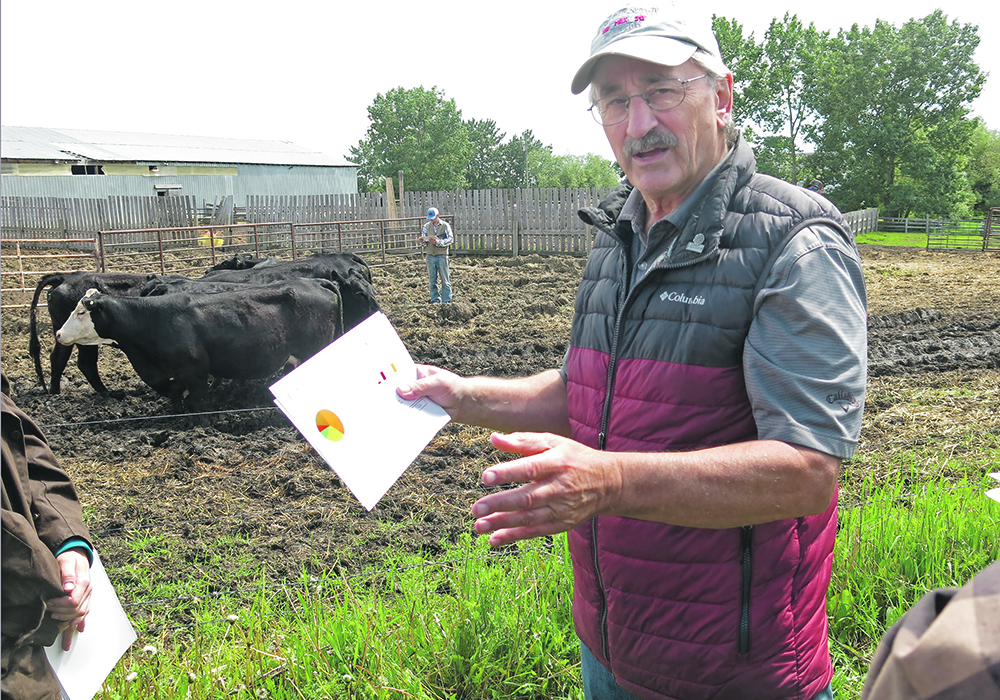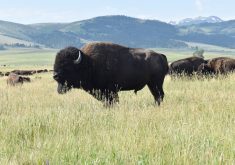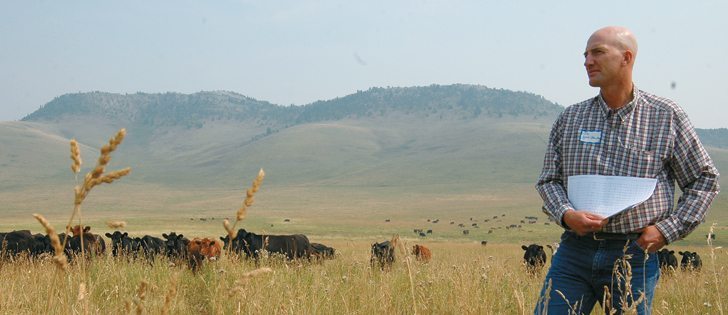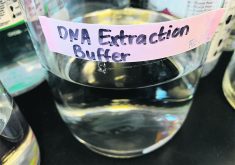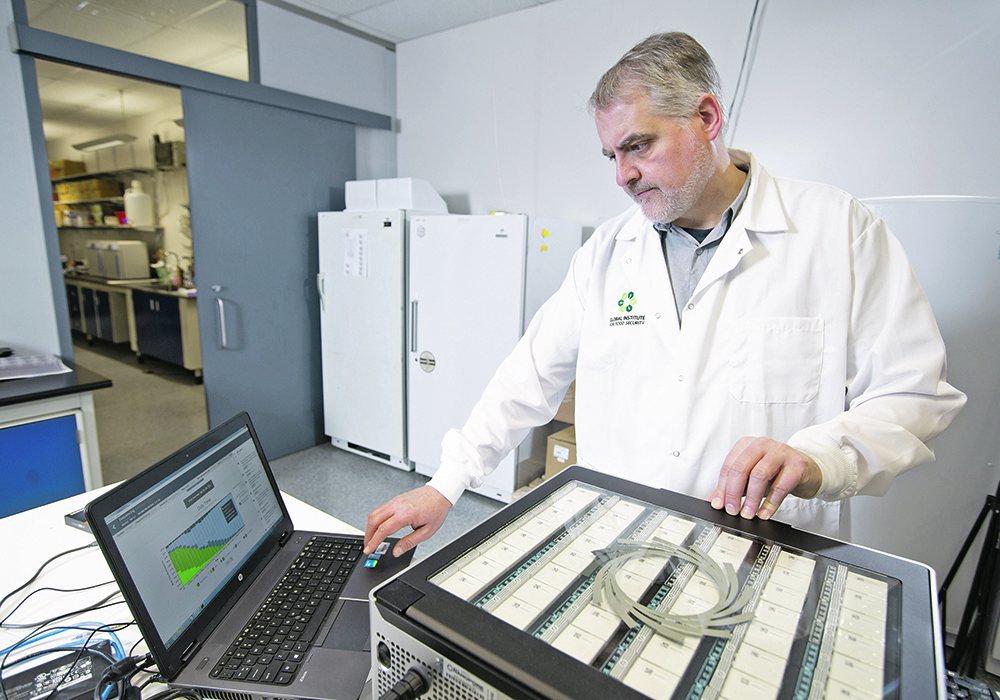Researcher urges industry to make the most of new technology, but producers say it must be worth the time it will require
Producers must keep better records in order for the cow-calf industry to use the full potential of genomics to select cattle for desirable traits, says a scientist.
“If you’re going to take advantage of any of the new technologies, having a comprehensive individual cow record-keeping system is essential,” said John Basarab, a research scientist with the University of Alberta and head of beef operations with Livestock Gentec.
Records are particularly important in genomics, which use genetic mapping and DNA sequencing to assess individual animals, he said in an interview.
Read Also

Beef cattle more prone to trace mineral deficiencies
The trace mineral status of our cows and calves is a significant challenge for western Canadian producers and veterinarians.
“So, you’ve got to be able to identify who’s the good one and who’s the bad one.”
However, it is challenging for many producers to balance such new technologies and practices with the time-consuming physical work that typically needs to be done around their operations, said rancher Jim Anderson.
“This does have a long-term benefit, but… you don’t have enough time to do all of the research on the data. And that’s what I think is an issue, is that they talk about data on everything, but to get value out of it, you have to sit down and analyze it and spend time analyzing.”
As an Alberta Innovates centre based at the University of Alberta, Livestock Gentec was created in 2010 to bring the benefits of genomics to Canada’s livestock industry.
Basarab said although many beef producers typically haven’t seen much value in keeping detailed records of their cattle, “you can see now with genomics and how quickly we can move in some areas, you’re going, ‘wow, the speed of things is picking up quickly’. ”
He pointed to what has been accomplished in a relatively short time by the dairy industry, which he said used to rely on expensive testing for traits such as feed intake.
“Genomics came along and they could genotype each bull or young daughter coming in… and of course, because they use AI, artificial insemination, a sire can have tens and thousands of daughters, so then they can end up with breeding values that have 90 percent accuracy.”
Dairy producers started effectively using genomics around 2009, he said.
“Their rate of genetic improvement almost doubled and tripled… just from the use of genetics, so the amount of progress they’re making from what they call their lifetime milk production increased by double to three times in 10 to 15 years.”
However, part of the problem faced by genomics in the beef industry is the sector is not vertically integrated, he said. It is instead divided into many separate segments, with everyone “all doing their own thing and taking their own profit.”
Some cow-calf producers are asking why they should undertake genetic improvement when nobody is paying more for it at the auction market, said Basarab. There is a huge disparity between what the packer is earning and what producers earn, he said.
“The feedlot guy right now could be losing up to $300 a head… because how the system gets corrected is to pay less for calves, so that’s why I say vertical integration or co-operative integration is important.”
There needs to be information shared throughout the production chain so that “the price and value flows back through the various segments so everybody’s getting part of the share of when things improve.”
Basarab spoke at the recent Livestock Roundup 2022 hosted by the Grey Wooded Forage Association at the Forshee Community Hall northwest of Red Deer. He said the calf crop percentage — the number of calves weaned per 100 females exposed to breeding — has remained at 83 to 85 in Western Canada for the last 25 to 30 years.
Replacement heifer selection is “a real challenge, and most cattle producers feel that they do a pretty good job. After all, they understand their cattle, they know what’s going on, but I’ve sort of done some double takes on this and said, ‘well, if we’re so good at it, why has the calf crop percentage… stayed the same for as long as we’ve measured it for 30 plus years?”
Part of the problem is that selecting good heifers means keeping adequate records, said Basarab. “You need to be able to measure what you manage….
“Now, with genomics and genetics, you need to know what your cows are doing and your cattle are doing, and you need to know every cow that ever came into your herd. Your replacement heifer, you need to know when it came and it left and the date, and why… so, data is huge.”
Although there is sophisticated subscription-based software that can help keep such records, it can also be as simple as using the Excel spreadsheets that are available on every Microsoft Windows-based personal computer, said Basarab in the interview.
“So, there are places you can go to learn about how to use a spreadsheet, and even when we do know all these genomic things, we can essentially send all of the breeding values back in an Excel spreadsheet so that you can sort of mess with them and play with them any way you want.”
People attending Livestock Roundup 2022 took part in a beef cow genomic challenge at a ranch operated by Grant Smith. They had to visually match each cow in front of them with a specific card for each animal, which only contained data from Livestock Gentec.
The cards included a pie chart outlining the estimated percentage of breeds such as Angus, Simmental and Hereford contained in each cow, along with data such as their score on Livestock Gentec’s Replacement Heifer Profit Index. The animals represented in the cards’ data were compared to more than 13,000 animals based on information such as residual feed intake, as well as more than 8,000 animals using carcass data and genotypes.
Anderson said from his perspective, it was “just another tool, but it’s not going to be the (complete) answer.” It must be complemented by the producer’s own judgment honed by years of experience, he said, joking that his own age was “somewhere over 49.”
Smith was involved with Livestock Gentec through research at his ranch, helping to substantially lower the cost of genomics testing. As someone who has been involved with the cow-calf sector for about three years, he said last year’s drought followed by depressed markets and extreme costs for inputs has made things challenging for his operation.
“I keep reminding people that farming in general is a low-profit game. Yeah, the cow-calf sector is even worse, so you have to make every dollar work for you, otherwise you’re in trouble …
“That’s why one of the reasons I’m looking at (genomics) is that there’s a top half and a bottom half of my herd, and the quicker I can establish that, the better. When it comes time to sell, it’ll be another selection tool for me to go, ‘well, it’s a drought year. I have to sell some animals,’ and this is going to be part of it.”


